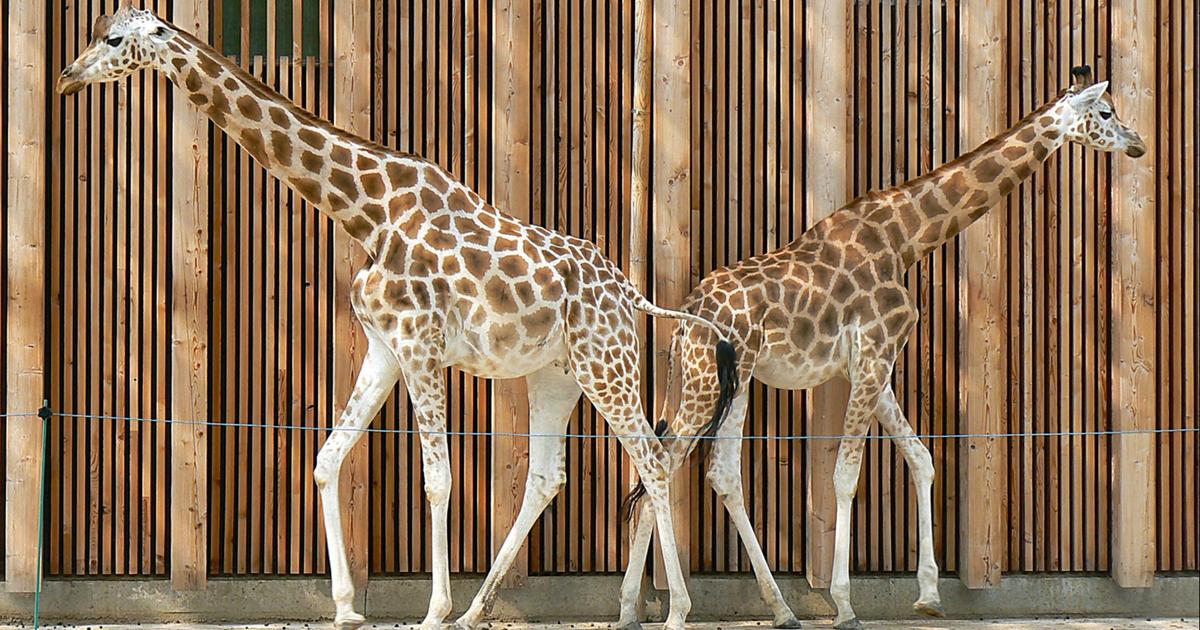The Nuremberg zoo wants to counteract the extinction of native trees and protect the Hohenester whitebeam.
Nuremberg - The Hohenester whitebeam (Sorbus Hohenesteri) is a real natural gem and threatened with extinction.
This tree species grows on a cliff near Forchheim: its entire population comprises just ten specimens on an area of four square kilometers, the population trend is decreasing according to the IUCN.
That should change now.
“At the Nuremberg Zoo * we see the extinction of species and the loss of biodiversity every day.
It is global problems that, with climate change, represent the greatest challenges for us humans.
We have to take action.
Without biodiversity, we will lose our livelihood, ”says Jörg Beckmann, zoological director and deputy director of the Nuremberg zoo.
Nuremberg: Mayor Vogel planted Schnizlein whitebeam
In May 2021, Mayor Christian Vogel planted the Schnizlein whitebeam (Sorbus schnizleiniana) in the zoo, another endemic species that is only found in the Franconian Alb. In total, the Nuremberg zoo * currently offers six threatened whitebeam species a new location. These are also the Pannonian whitebeam (S. pannonica), the Harz whitebeam (S. harziana), the Kordigast whitebeam (S. cordigastensis) and the Danube whitebeam (S. danubialis).
The zoo is supported by the Botanical Garden of the Friedrich-Alexander University Erlangen-Nuremberg (FAU). The experts not only contribute plants, but also their extensive knowledge. In the Erlangen Botanical Garden, the plants are grown in so-called conservation cultures in order to ensure the survival of rare species. “We are very pleased about the cooperation between our two institutions,” emphasizes the technical director of the FAU Botanical Garden, Claus Heuvemann, and adds: “After all, we are all committed to species protection through the care and reproduction of threatened animal and plant species. I hope that in the future we will find further opportunities to expand this type of cooperation even further. "
Biologist Andrea Kerskes from the government of Middle Franconia explains: “In order to reduce the risk of these rare plants falling victim to a disease, for example, it makes sense to distribute the few individuals over a large area.
If all plants are concentrated in one place, the probability of extinction increases significantly. "
Nuremberg: The whitebeams have a great advantage over breeding programs for animals
Risks such as floods, droughts or forest fires can also contribute to this.
For the same reason, zoos distribute the threatened species they keep under conservation breeding programs across countries.
The whitebeams have the great advantage over breeding programs for animals that they reproduce asexually and that their seeds can germinate even without fertilization.
The offspring carry exactly the same genetic information as their mother tree.
Plants that reproduce in this way are called apomicts.
Nuremberg: This is what whitberries need
Whitberries need a lot of light and, due to their low height, are not competitive with growing species. In the past, species such as the whitebeam were promoted through the management of the forests as so-called low and medium forests. The trees were regularly "put on the cane", that is, cut off in order to obtain firewood. As a result, larger trees towering over the whitebeams were removed and light came back down to the ground.
Nowadays we only have small remnants of low and medium-sized forests, which, however, are promoted by state nature conservation programs because of their high structural diversity and biodiversity.
Plant species are also increasingly threatened with extinction.
According to the IUCN, for example, 34 percent of all conifer species are currently endangered, but “only” 26 percent of mammals.
The reasons for the threat status in animals and plants are almost always the same: unsustainable use by humans and the loss of habitat.
* Merkur.de / bayern is an offer from IPPEN.MEDIA
By the way: The most important stories from beautiful Nuremberg are now also available in our brand new, regular Nuremberg newsletter.









